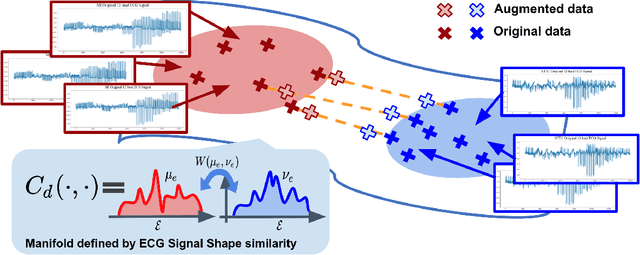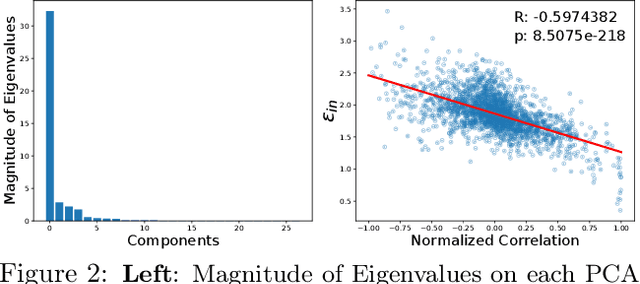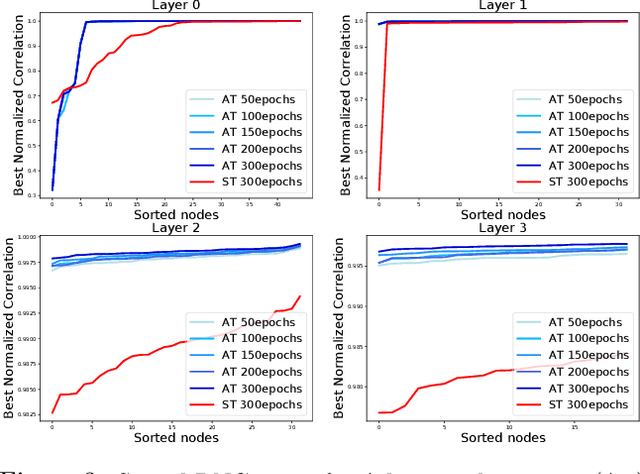Zhuolin Yang
AceReason-Nemotron 1.1: Advancing Math and Code Reasoning through SFT and RL Synergy
Jun 16, 2025Abstract:In this work, we investigate the synergy between supervised fine-tuning (SFT) and reinforcement learning (RL) in developing strong reasoning models. We begin by curating the SFT training data through two scaling strategies: increasing the number of collected prompts and the number of generated responses per prompt. Both approaches yield notable improvements in reasoning performance, with scaling the number of prompts resulting in more substantial gains. We then explore the following questions regarding the synergy between SFT and RL: (i) Does a stronger SFT model consistently lead to better final performance after large-scale RL training? (ii) How can we determine an appropriate sampling temperature during RL training to effectively balance exploration and exploitation for a given SFT initialization? Our findings suggest that (i) holds true, provided effective RL training is conducted, particularly when the sampling temperature is carefully chosen to maintain the temperature-adjusted entropy around 0.3, a setting that strikes a good balance between exploration and exploitation. Notably, the performance gap between initial SFT models narrows significantly throughout the RL process. Leveraging a strong SFT foundation and insights into the synergistic interplay between SFT and RL, our AceReason-Nemotron-1.1 7B model significantly outperforms AceReason-Nemotron-1.0 and achieves new state-of-the-art performance among Qwen2.5-7B-based reasoning models on challenging math and code benchmarks, thereby demonstrating the effectiveness of our post-training recipe. We release the model and data at: https://huggingface.co/nvidia/AceReason-Nemotron-1.1-7B
AceReason-Nemotron: Advancing Math and Code Reasoning through Reinforcement Learning
May 22, 2025Abstract:Despite recent progress in large-scale reinforcement learning (RL) for reasoning, the training recipe for building high-performing reasoning models remains elusive. Key implementation details of frontier models, such as DeepSeek-R1, including data curation strategies and RL training recipe, are often omitted. Moreover, recent research indicates distillation remains more effective than RL for smaller models. In this work, we demonstrate that large-scale RL can significantly enhance the reasoning capabilities of strong, small- and mid-sized models, achieving results that surpass those of state-of-the-art distillation-based models. We systematically study the RL training process through extensive ablations and propose a simple yet effective approach: first training on math-only prompts, then on code-only prompts. Notably, we find that math-only RL not only significantly enhances the performance of strong distilled models on math benchmarks (e.g., +14.6% / +17.2% on AIME 2025 for the 7B / 14B models), but also code reasoning tasks (e.g., +6.8% / +5.8% on LiveCodeBench for the 7B / 14B models). In addition, extended code-only RL iterations further improve performance on code benchmarks with minimal or no degradation in math results. We develop a robust data curation pipeline to collect challenging prompts with high-quality, verifiable answers and test cases to enable verification-based RL across both domains. Finally, we identify key experimental insights, including curriculum learning with progressively increasing response lengths and the stabilizing effect of on-policy parameter updates. We find that RL not only elicits the foundational reasoning capabilities acquired during pretraining and supervised fine-tuning (e.g., distillation), but also pushes the limits of the model's reasoning ability, enabling it to solve problems that were previously unsolvable.
Nemotron-H: A Family of Accurate and Efficient Hybrid Mamba-Transformer Models
Apr 10, 2025Abstract:As inference-time scaling becomes critical for enhanced reasoning capabilities, it is increasingly becoming important to build models that are efficient to infer. We introduce Nemotron-H, a family of 8B and 56B/47B hybrid Mamba-Transformer models designed to reduce inference cost for a given accuracy level. To achieve this goal, we replace the majority of self-attention layers in the common Transformer model architecture with Mamba layers that perform constant computation and require constant memory per generated token. We show that Nemotron-H models offer either better or on-par accuracy compared to other similarly-sized state-of-the-art open-sourced Transformer models (e.g., Qwen-2.5-7B/72B and Llama-3.1-8B/70B), while being up to 3$\times$ faster at inference. To further increase inference speed and reduce the memory required at inference time, we created Nemotron-H-47B-Base from the 56B model using a new compression via pruning and distillation technique called MiniPuzzle. Nemotron-H-47B-Base achieves similar accuracy to the 56B model, but is 20% faster to infer. In addition, we introduce an FP8-based training recipe and show that it can achieve on par results with BF16-based training. This recipe is used to train the 56B model. All Nemotron-H models will be released, with support in Hugging Face, NeMo, and Megatron-LM.
Cosmos-Reason1: From Physical Common Sense To Embodied Reasoning
Mar 18, 2025Abstract:Physical AI systems need to perceive, understand, and perform complex actions in the physical world. In this paper, we present the Cosmos-Reason1 models that can understand the physical world and generate appropriate embodied decisions (e.g., next step action) in natural language through long chain-of-thought reasoning processes. We begin by defining key capabilities for Physical AI reasoning, with a focus on physical common sense and embodied reasoning. To represent physical common sense, we use a hierarchical ontology that captures fundamental knowledge about space, time, and physics. For embodied reasoning, we rely on a two-dimensional ontology that generalizes across different physical embodiments. Building on these capabilities, we develop two multimodal large language models, Cosmos-Reason1-8B and Cosmos-Reason1-56B. We curate data and train our models in four stages: vision pre-training, general supervised fine-tuning (SFT), Physical AI SFT, and Physical AI reinforcement learning (RL) as the post-training. To evaluate our models, we build comprehensive benchmarks for physical common sense and embodied reasoning according to our ontologies. Evaluation results show that Physical AI SFT and reinforcement learning bring significant improvements. To facilitate the development of Physical AI, we will make our code and pre-trained models available under the NVIDIA Open Model License at https://github.com/nvidia-cosmos/cosmos-reason1.
Re-ViLM: Retrieval-Augmented Visual Language Model for Zero and Few-Shot Image Captioning
Feb 09, 2023



Abstract:Augmenting pretrained language models (LMs) with a vision encoder (e.g., Flamingo) has obtained state-of-the-art results in image-to-text generation. However, these models store all the knowledge within their parameters, thus often requiring enormous model parameters to model the abundant visual concepts and very rich textual descriptions. Additionally, they are inefficient in incorporating new data, requiring a computational-expensive fine-tuning process. In this work, we introduce a Retrieval-augmented Visual Language Model, Re-ViLM, built upon the Flamingo, that supports retrieving the relevant knowledge from the external database for zero and in-context few-shot image-to-text generations. By storing certain knowledge explicitly in the external database, our approach reduces the number of model parameters and can easily accommodate new data during evaluation by simply updating the database. We also construct an interleaved image and text data that facilitates in-context few-shot learning capabilities. We demonstrate that Re-ViLM significantly boosts performance for image-to-text generation tasks, especially for zero-shot and few-shot generation in out-of-domain settings with 4 times less parameters compared with baseline methods.
Interpolation for Robust Learning: Data Augmentation on Geodesics
Feb 07, 2023Abstract:We propose to study and promote the robustness of a model as per its performance through the interpolation of training data distributions. Specifically, (1) we augment the data by finding the worst-case Wasserstein barycenter on the geodesic connecting subpopulation distributions of different categories. (2) We regularize the model for smoother performance on the continuous geodesic path connecting subpopulation distributions. (3) Additionally, we provide a theoretical guarantee of robustness improvement and investigate how the geodesic location and the sample size contribute, respectively. Experimental validations of the proposed strategy on four datasets, including CIFAR-100 and ImageNet, establish the efficacy of our method, e.g., our method improves the baselines' certifiable robustness on CIFAR10 up to $7.7\%$, with $16.8\%$ on empirical robustness on CIFAR-100. Our work provides a new perspective of model robustness through the lens of Wasserstein geodesic-based interpolation with a practical off-the-shelf strategy that can be combined with existing robust training methods.
GeoECG: Data Augmentation via Wasserstein Geodesic Perturbation for Robust Electrocardiogram Prediction
Aug 10, 2022



Abstract:There has been an increased interest in applying deep neural networks to automatically interpret and analyze the 12-lead electrocardiogram (ECG). The current paradigms with machine learning methods are often limited by the amount of labeled data. This phenomenon is particularly problematic for clinically-relevant data, where labeling at scale can be time-consuming and costly in terms of the specialized expertise and human effort required. Moreover, deep learning classifiers may be vulnerable to adversarial examples and perturbations, which could have catastrophic consequences, for example, when applied in the context of medical treatment, clinical trials, or insurance claims. In this paper, we propose a physiologically-inspired data augmentation method to improve performance and increase the robustness of heart disease detection based on ECG signals. We obtain augmented samples by perturbing the data distribution towards other classes along the geodesic in Wasserstein space. To better utilize domain-specific knowledge, we design a ground metric that recognizes the difference between ECG signals based on physiologically determined features. Learning from 12-lead ECG signals, our model is able to distinguish five categories of cardiac conditions. Our results demonstrate improvements in accuracy and robustness, reflecting the effectiveness of our data augmentation method.
* 26 pages, Figure 13, Machine Learning for Healthcare 2022
On the Certified Robustness for Ensemble Models and Beyond
Jul 22, 2021



Abstract:Recent studies show that deep neural networks (DNN) are vulnerable to adversarial examples, which aim to mislead DNNs by adding perturbations with small magnitude. To defend against such attacks, both empirical and theoretical defense approaches have been extensively studied for a single ML model. In this work, we aim to analyze and provide the certified robustness for ensemble ML models, together with the sufficient and necessary conditions of robustness for different ensemble protocols. Although ensemble models are shown more robust than a single model empirically; surprisingly, we find that in terms of the certified robustness the standard ensemble models only achieve marginal improvement compared to a single model. Thus, to explore the conditions that guarantee to provide certifiably robust ensemble ML models, we first prove that diversified gradient and large confidence margin are sufficient and necessary conditions for certifiably robust ensemble models under the model-smoothness assumption. We then provide the bounded model-smoothness analysis based on the proposed Ensemble-before-Smoothing strategy. We also prove that an ensemble model can always achieve higher certified robustness than a single base model under mild conditions. Inspired by the theoretical findings, we propose the lightweight Diversity Regularized Training (DRT) to train certifiably robust ensemble ML models. Extensive experiments show that our DRT enhanced ensembles can consistently achieve higher certified robustness than existing single and ensemble ML models, demonstrating the state-of-the-art certified L2-robustness on MNIST, CIFAR-10, and ImageNet datasets.
TRS: Transferability Reduced Ensemble via Encouraging Gradient Diversity and Model Smoothness
Apr 01, 2021



Abstract:Adversarial Transferability is an intriguing property of adversarial examples -- a perturbation that is crafted against one model is also effective against another model, which may arise from a different model family or training process. To better protect ML systems against adversarial attacks, several questions are raised: what are the sufficient conditions for adversarial transferability? Is it possible to bound such transferability? Is there a way to reduce the transferability in order to improve the robustness of an ensemble ML model? To answer these questions, we first theoretically analyze sufficient conditions for transferability between models and propose a practical algorithm to reduce transferability within an ensemble to improve its robustness. Our theoretical analysis shows only the orthogonality between gradients of different models is not enough to ensure low adversarial transferability: the model smoothness is also an important factor. In particular, we provide a lower/upper bound of adversarial transferability based on model gradient similarity for low risk classifiers based on gradient orthogonality and model smoothness. We demonstrate that under the condition of gradient orthogonality, smoother classifiers will guarantee lower adversarial transferability. Furthermore, we propose an effective Transferability Reduced Smooth-ensemble(TRS) training strategy to train a robust ensemble with low transferability by enforcing model smoothness and gradient orthogonality between base models. We conduct extensive experiments on TRS by comparing with other state-of-the-art baselines on different datasets, showing that the proposed TRS outperforms all baselines significantly. We believe our analysis on adversarial transferability will inspire future research towards developing robust ML models taking these adversarial transferability properties into account.
Understanding Robustness in Teacher-Student Setting: A New Perspective
Mar 01, 2021



Abstract:Adversarial examples have appeared as a ubiquitous property of machine learning models where bounded adversarial perturbation could mislead the models to make arbitrarily incorrect predictions. Such examples provide a way to assess the robustness of machine learning models as well as a proxy for understanding the model training process. Extensive studies try to explain the existence of adversarial examples and provide ways to improve model robustness (e.g. adversarial training). While they mostly focus on models trained on datasets with predefined labels, we leverage the teacher-student framework and assume a teacher model, or oracle, to provide the labels for given instances. We extend Tian (2019) in the case of low-rank input data and show that student specialization (trained student neuron is highly correlated with certain teacher neuron at the same layer) still happens within the input subspace, but the teacher and student nodes could differ wildly out of the data subspace, which we conjecture leads to adversarial examples. Extensive experiments show that student specialization correlates strongly with model robustness in different scenarios, including student trained via standard training, adversarial training, confidence-calibrated adversarial training, and training with robust feature dataset. Our studies could shed light on the future exploration about adversarial examples, and enhancing model robustness via principled data augmentation.
 Add to Chrome
Add to Chrome Add to Firefox
Add to Firefox Add to Edge
Add to Edge